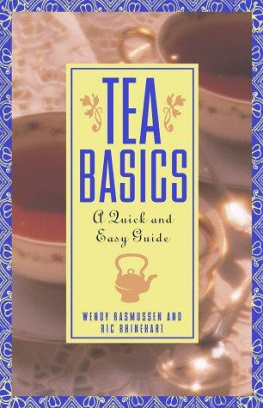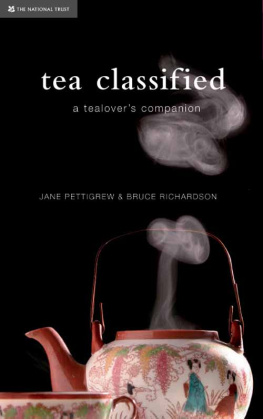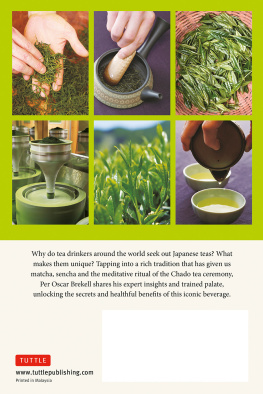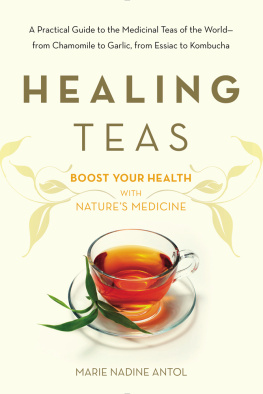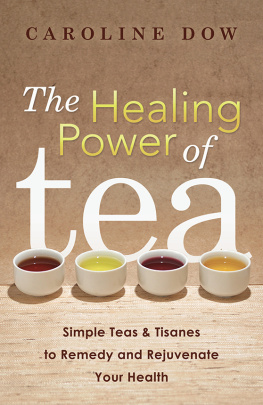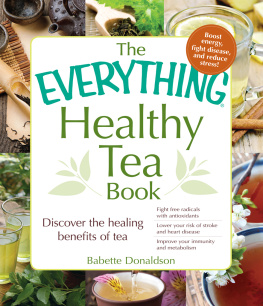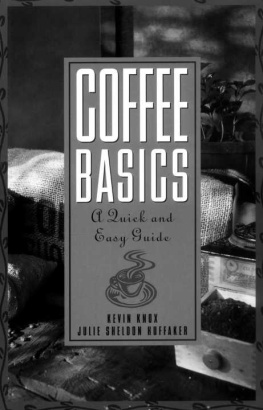





CONTENTS
ix
xiii
CHAPTER 1
CHAPTER 2 25
CHAPTER 3 33
CHAPTER 4 61
CHAPTER 5 87
CHAPTER 6 95
CHAPTER 7 109
CHAPTER 8 127
CHAPTER 9 143
PREFACE
This book is meant to introduce you to the rich and rewarding world of tea. Not just any old tea, certainly not those tea bags you purchased off the grocery store shelf in 1974, still sitting in the back of the pantry. No, this is the world of Premium Tea.
How are we going to introduce you? What defines the ultimate cup of tea? The truth is, you will get a thousand answers from every thousand people you ask.
So, how do we define our industry or the products they manufacture within the framework of "premium or specialty?" There isn't a simple answer, because tea is rarely a simple beverage; it is complex and ever changing. To conscientiously define premium, we would have to change the answer every year, because teas change every year and new products emerge under the auspices of "tea."
To define premium for this industry, we would have to look at what tea has been, and what it currently is, without ever being able to predict what it will be. Most of us don't think about it, but tea is an agricultural commodity. The cup of tea you enjoy iced with lemon, or steaming hot in delicate china cups, is the product of a bush! As such, it is subject to the whims of nature and, worse yet, the sometimes terrible whims of man. Floods, insects, and warfare impact the world of tea.
But, even if we could define premium and knew, for example, that the Darjeeling standards we set up as premium would remain constant in next year's crop, those standards would not define premium for every taster. Taste is a personal and subjective experience. So, while we avoid defining the term premium in any objective sense (there is no chemical analysis we know of that defines a premium tea), we will strive to provide you with the tools necessary to define what makes the ultimate cup of tea for yourself.
Learning to cup tea, finding out how it is grown and processed, establishing the fundamentals of blending, storing, and brewing are all important and necessary elements for the dedicated consumer who wants a great "cuppa," but what you will discover is that the best tea for you personally will change on a seasonal, daily, or maybe even hourly basis. Your favorite tea for a summertime thirst-quenching iced beverage isn't necessarily the best tea for curling up with a good book in front of the fire. What we hope is that, after reading this book, you will begin to think about what makes up the best tea whether you are enjoying tea in tea bags, loose leaf, ready-to-drink, or teas blended with flavoring oils and/or herbal components.
Finally, we want to introduce you to the concept of classic varietal teas that have been established for hundreds of years but today are increasingly rare commodities. Learning to appreciate tea as a product solely of careful plant management, to discover subtle taste characteristics derived from origin, not from flavoring oils or other additives-this is a fantastic adventure no tea lover should miss. In a marketplace where tea drinkers are enjoying the likes of "caramel pear" black tea, it may not be the most popular or profitable side of tea, but it is well worth your time and effort.
You-and similarly minded souls-taking this adventure seriously is also the only chance our industry has of retaining the traditional standards for varietal teas. So, we won't argue that some flavored teas are indeed better than others, either through skillful product development and/or use of better materials, but take your tastebuds beyond this and discover what premium means within the framework of naturally occurring tea flavors. By educating you about what tea has to offer in and of itself, we hope to support the growers who create these unique flavors and ensure that the traditional orthodox manufacture of tea is preserved.
As a final note, we have tried to touch on as many relevant areas as possible within the parameters of a single slim volume. Each chapter in this book could reasonably be expanded to fill an entire text on its own. This is one of the beauties of tea. Just as there are teas to satisfy any taste, the study of tea can also present areas of interest to anyone from historians to chemists, storytellers to venture capitalists (well, these two might be closer than we think). Anyway, we hope you enjoy the little sips we have presented here, find them useful and informative, and, perhaps, are even inspired to further your own education by the cupful!
ACKNOWLEDGMENTS
Although while writing a concise book on such a broad subject is definitely a challenge, the greater challenge is keeping the acknowledgements section brief given the number of people who have shared their time, knowledge and passion with us.
The greatest debt of all is to Mr. Michael Spillane of G. S. Haly. Over ten years ago, Wendy had the extreme luck of landing a job with Castle Communications (we'll get to that debt in a minute). One of the more enjoyable aspects of this job was producing a little newsletter called The Tea Quarterly and writing about tea for various trade publications. The man who always returned phone calls, answered every stupid question ever asked about tea, and then gave critical insight into tasting them is Mike Spillane. For Ric, the G. S. Haly Company was instrumental in creating a tea lover out of a dedicated coffee man. He has continued to be badgered by both of us (nearly incessantly) since then, and he is still the greatest and most patient teacher in the world of tea.
Second only to Mr. Spillane is our mentor and friend, Mr. Tim Castle. He helped us learn how to taste and put the experience into words. This may be the most difficult skill in the world to pass on to another person, but as one of the most astute and poetic people we know, he does a fine job. He also put up with Wendy as an employee for close to a decade, only firing her occasionally, although she probably deserved it more often. These two built the foundation of our combined passion for and knowledge about tea, and they served unwittingly as our introduction to one another, although we won't make them take responsibility for either one.

